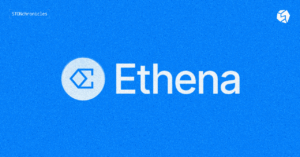Trading on the open market, especially the traditional stock market, is a very demanding occupation, especially when it comes to the capital required for making entry into the trade and deriving profits. Many traders do not have the necessary capital, or do not wish to risk their savings, when trading on the open market. That is why exchanges and trading platforms offer a convenient and affordable tool for hedging such issues – margin trading.
What Is Margin Trading?
Also known as buying on margin or trading with a shoulder, margin trading is the use of leverage, or borrowed funds, to enter trades and make larger transactions when trading on the exchange, instead of using own capital and savings. Margin trading is inherently risky, but is a necessary measure for entering into larger trades.
In order to engage in margin trading, users need to open a brokerage account, or turn to the services of a broker. Most exchanges and trading platforms offer such services, allowing users to deposit a certain amount and then borrow against it for their future trades. The borrowed funds are secured by both the deposit and the investments purchased using the borrowed funds in order to secure the lender. Exchanges routinely offer anywhere between X2 to X100 leverage, or even more, giving users the chance to opt for the level of risk they have appetites for.
Types of Margins
Apart from the need to open a brokerage account, users willing to engage in margin trading will encounter three main types of margin.
- Minimum Margin is a minimum amount of the deposit they will need to have in order to gain access to leverage. The minimum margin will change depending on the assets users will be willing to buy, based on the associated risks.
- Initial Margin is the percentage ratio of the purchased assets’ price that is covered by the trader’s own funds. The rest can be purchased on margin. Exchanges set their own percentages regarding the initial margin and the types of assets purchased.
- Maintenance Margin is the percentage of the trader’s own funds that has to be kept on the margin account in order to continue gaining access to the margin. The purpose of the maintenance margin is to keep investors from abusing the margin and reducing possible debt ceilings.
Margin Trading in Practice
Margin trading involves a high degree of risk associated with the possible decline in the price of the assets purchased on margin. Any decline will signify an automatic decrease in the equity of the trader. Should such a situation arise, the trader will face a margin call.
A margin call is when the trader’s equity on their account is no longer sufficient to cover the maintenance margin set by the exchange. Should this occur, the trader will be required to add more equity to the deposit to increase the maintenance margin.
If a simple example is to be taken for illustration, let us consider Bob – a trader who has decided to open a margin account with an initial deposit of $2,000. This amount is sufficient to cover the minimum margin. The exchange allows Bob to take out a 100% margin, meaning he can now purchase $4,000 worth of assets. However, a sudden release of regulations regarding the purchased assets affects their price and their value drops to $3,000. The exchange Bob is using requires a 40% maintenance margin. In order to avoid a margin call, Bob rushes to deposit an extra $800 to his account to maintain the margin and keep on trading.
The example illustrates both the principle of operation of margin trading and the risks involved if the assets suddenly depreciate. This is especially relevant to cryptocurrencies, which are inherently volatile.
Advantages of Margin Trading
There are many advantages to margin trading that have made it an essential element of all stock and cryptocurrency market operations, giving traders access to extra funds well beyond their available capital.
Leverage – a major boost to purchasing power is the main advantage of margin trading, giving traders the chance to buy more using borrowed funds and expand their operations.
Profit maximization – larger amounts of available capital, albeit borrowed, allow traders to maximize their profits by entering into larger positions and purchasing more expensive assets in bigger volumes for their purposes.
Versatility – the margins have no repayment schedules, meaning traders can resort to the borrowed funds in any way they wish without having to pay at any set dates. Traders merely have to return the margin loan with a markup, which is even optional.
Risks of Margin Trading
Though margin trading is extremely attractive and even seductive for both novice and experienced traders, it is inherently risky and entails several aspects that have to be taken into account.
Interest – margin trading involves interest that traders have to pay on the borrowed funds, since the latter are not handed out for free by the broker or trading platform. Traders will have to pay the interest regardless of their performance on the market.
Price volatility – as illustrated in the example above, price fluctuations can have an impact on the value of the assets purchased using borrowed funds, resulting in a margin call.
Forced liquidation – should traders fail to top up their deposits to meet the margin’s requirements, their positions will be forcibly liquidated to cover the fees of the broker or exchange. Forced liquidations can happen without prior notice.
Loss maximization – just as margin trading can maximize profits, so too it can maximize losses if the trader performs poorly or the market experiences a downturn.
Margin trading will soon be available on the STON.fi DEX, giving users the chance to take out leverage and expand their trading operations.





